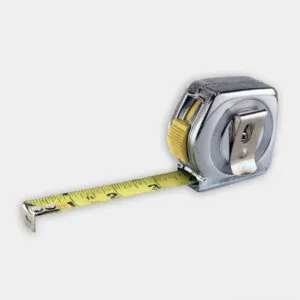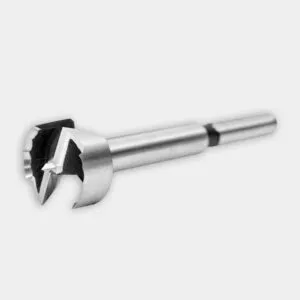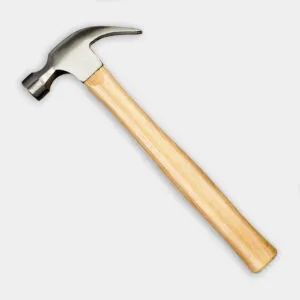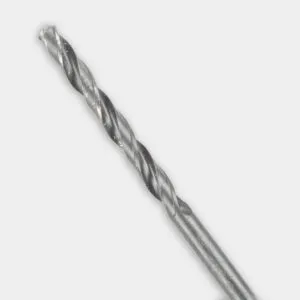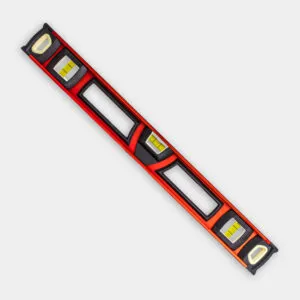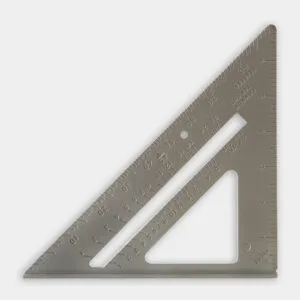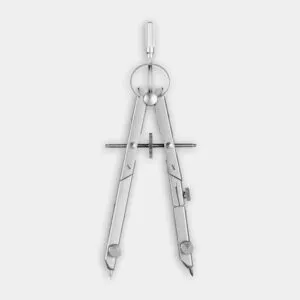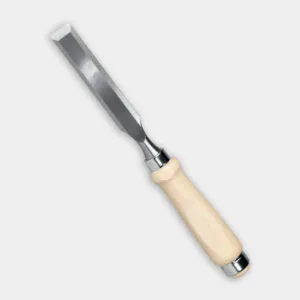Project details
Skill
Cost
Estimated Time
Building a tree fort is an exciting project that can create lasting memories for the whole family. This DIY endeavor requires a combination of carpentry skills and imagination, but the result will turn your backyard into a playground your kids will love. A well-constructed tree fort provides a safe space for play while teaching valuable lessons about construction and nature. In this guide, we’ll explore the step-by-step process of building a tree fort, drawing inspiration from the This Old House team’s experience constructing one for the Bicer family in Belmont, Massachusetts.
Choosing the Right Tree for Your Tree Fort
Selecting the right tree is important for your fort’s safety and longevity. Consider the following factors:
- Branch structure: Look for a tree with sturdy, horizontal branches at least 8 inches in diameter.
- Tree health: Choose a mature, healthy tree with strong branches.
- Tree species: Hardwoods like oak, maple, or beech are ideal due to their strength.
Consult with an arborist if you’re unsure about your chosen tree’s suitability. They can assess the tree’s health and recommend the best attachment points for your fort.
Planning Your Tree Fort
Before beginning construction, create a detailed plan for your tree fort. Consider these elements:
- Access method (ladder or stairs)
- Additional features (roof, windows, trapdoor)
- Height of the fort
- Number of support beams needed
- Platform size and shape
- Railing design and height
Once you know what elements you want to include, sketch your design and make a list of required materials. This planning stage will ensure a smooth building process and allow you to address potential challenges before construction begins.
Materials Needed To Build a Tree Fort
To build a tree fort similar to the one featured in the video, you’ll need the following tools and materials:
- Circular saw
- Decking boards
- Drill and various drill bits
- Hammer
- Level
- Pressure-treated lumber (2x10s, 4x6s, 2x8s)
- Reciprocating saw
- Rope for ladder (if desired)
- Safety equipment (goggles, gloves, hard hat)
- Screws and nails
- Specialty treehouse hardware (bolts, brackets, and fasteners)
- Tape measure
- Wrench set
Building Plans for a Treehouse
Find an overview of a tree fort building plan below. This includes the materials and parts you’ll need to build your treehouse.
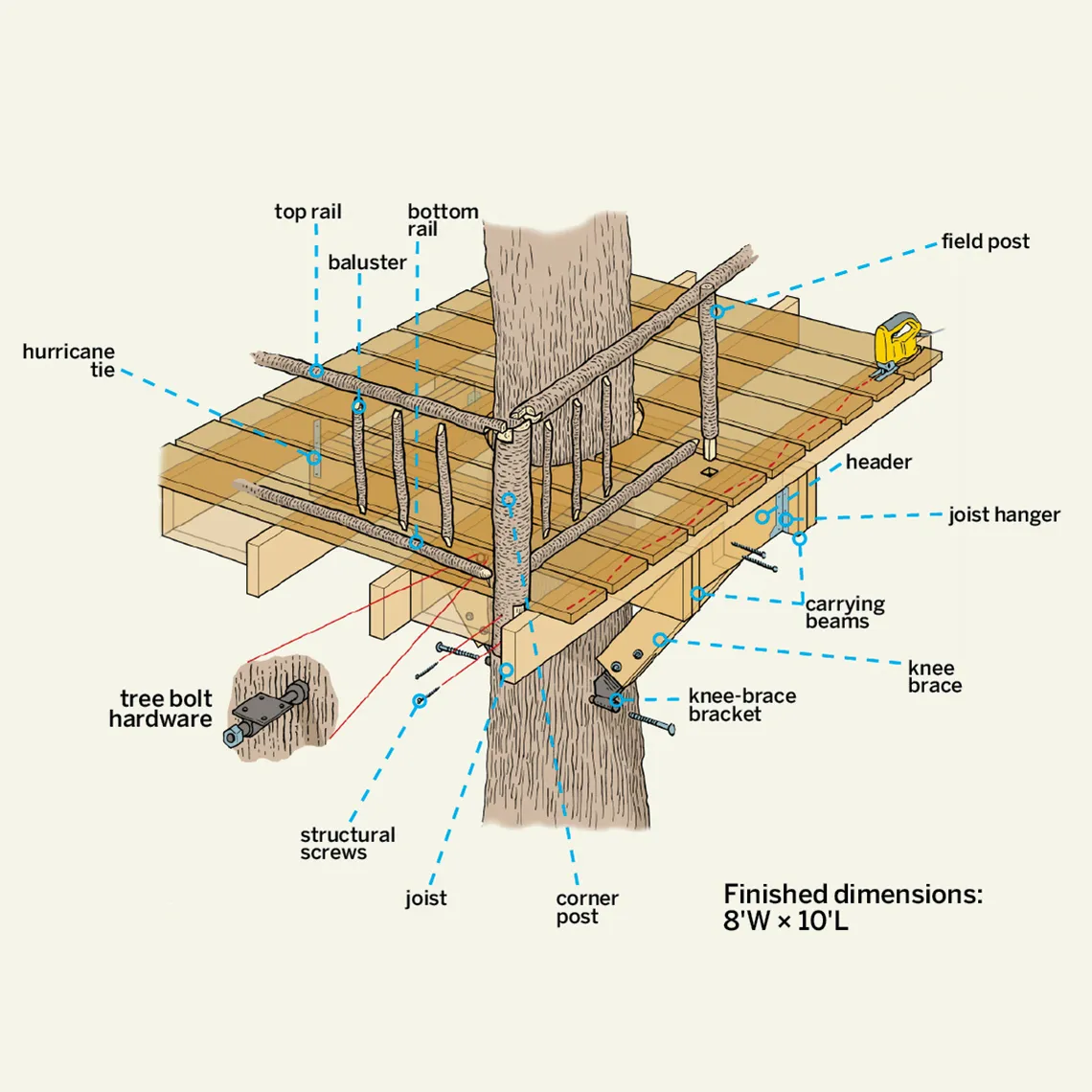
How To Build a DIY Treehouse
In the video, This Old House host Kevin O’Connor joins contractor Tom Silva and master carpenter Norm Abram to build a safe, sturdy tree fort, and you can build your own. Once you’ve designed your fort and gathered the necessary tools, follow our step-by-step guide below to build your fort.
Installing the Main Support System
The foundation of a sturdy tree fort lies in its support system. In the video, O’Connor and Silva demonstrate a method that minimizes damage to the tree while providing a solid base for the fort. We’ve outlined that method below.
Step 1: Drill the Holes
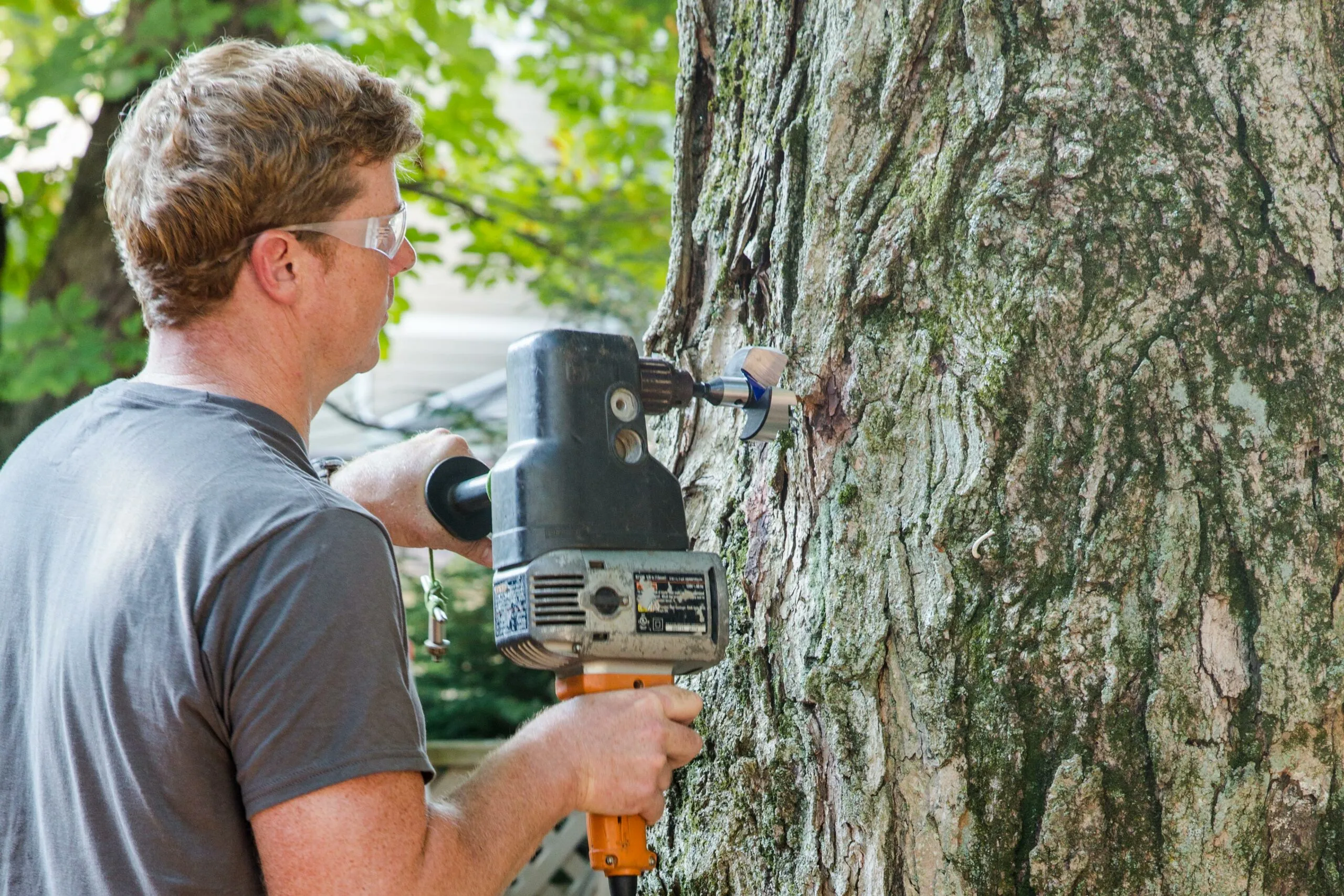
- Mark the bark about 17 inches below the finished deck height on one side of the tree.
- Use a 3-inch self-feed bit to bore into the trunk 2 inches past the bark layer.
- Drill a second hole directly opposite the first.
Step 2: Screw in the Hardware

- Using a 1 1/8-inch auger bit, drill 2 inches into the middle of the first hole. Make sure it’s level.
- Use a 1-inch auger bit to drill another hole 4 1/2 inches deep to accept the threads of the tree bolt.
- Slip the pipe bracket that will support the framing onto the tree bolt and cap it with a hex nut as shown.
- Twist the threaded end into the hole with a 1 7/8-inch socket wrench (or a pipe wrench).
- Repeat the process on the opposite side.
Step 3: Install the Beams
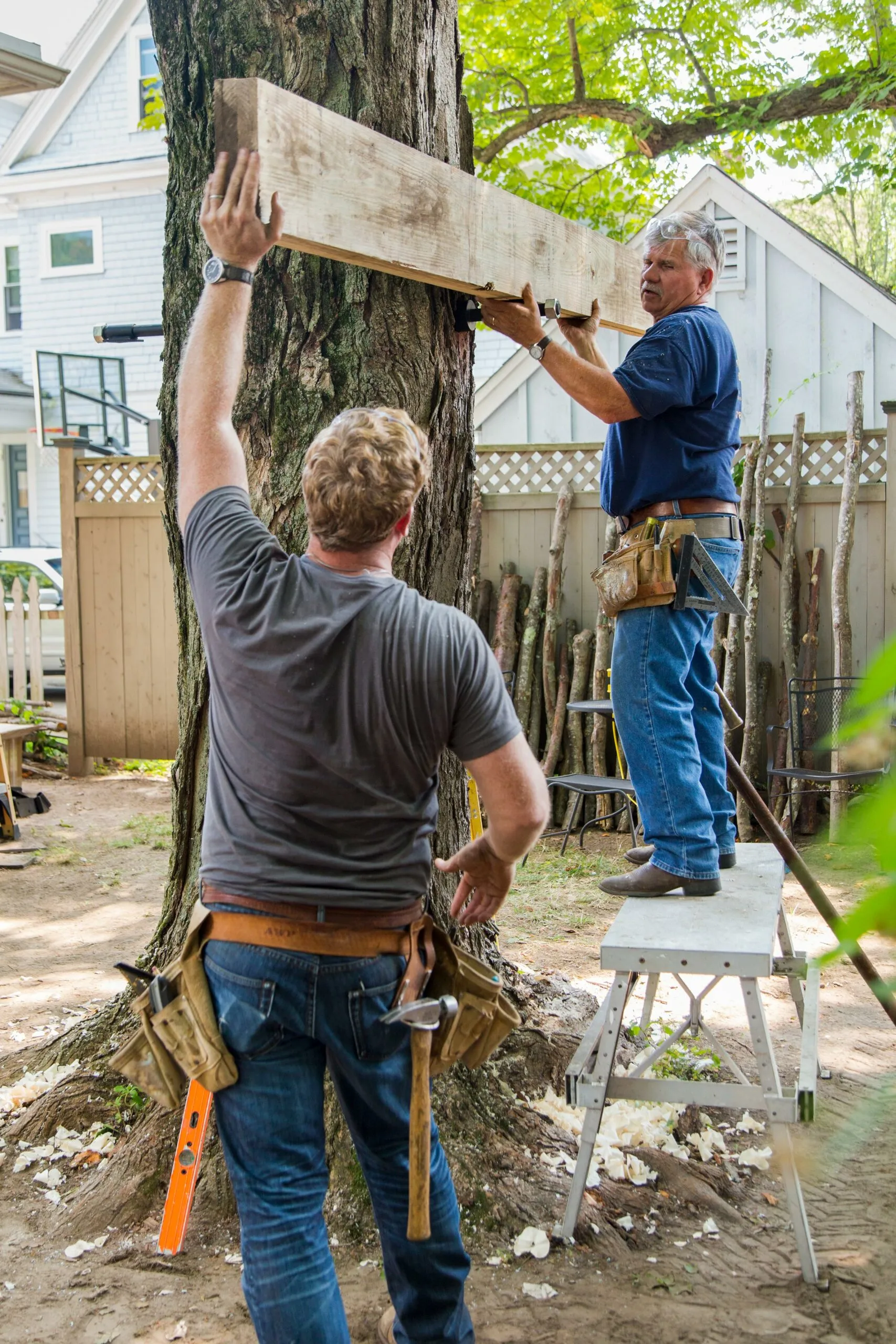
- Make a beam by joining a pair of 2x10s with construction adhesive and 16d ring shank nails.
- Slide the beam onto the pipe bracket as shown and center it.
- Attach the bracket to the beam with 4-inch structural screws.
- Level the beam using a 4-foot level,
- Brace the beam by driving 2-inch deck screws through 2x4s or deck boards and into each end of the beam.
- Repeat the process for the beam on the opposite side of the tree.
Framing the Platform
With the main support in place, it’s time to frame the platform by adding headers as follows:
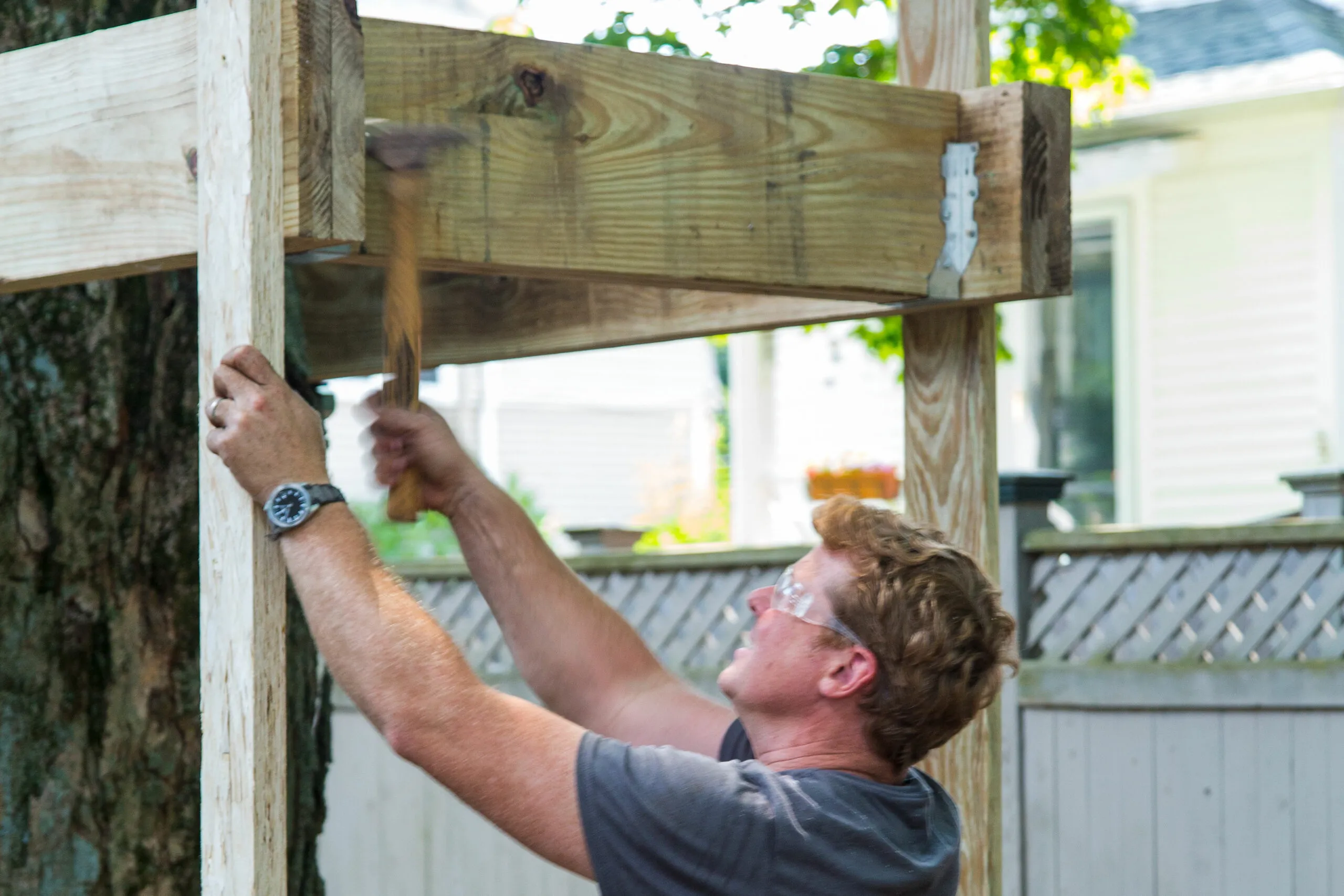
- Attach joist hangers a few inches inside the ends of the beams with 1 1/2-inch joist hanger nails.
- Make a short beam with more 2x10s to fit in the hangers.
- Nestle the header in the joist hanger and nail it in place with more joist hanger nails as shown.
- Repeat at the opposite ends of the beams.
Adding Knee Braces
Knee braces provide additional stability to your tree fort by distributing the weight of the fort and its occupants, reducing stress on the main support bolts. Follow the steps below to install knee braces:
Step 1: Size the Knee Brace
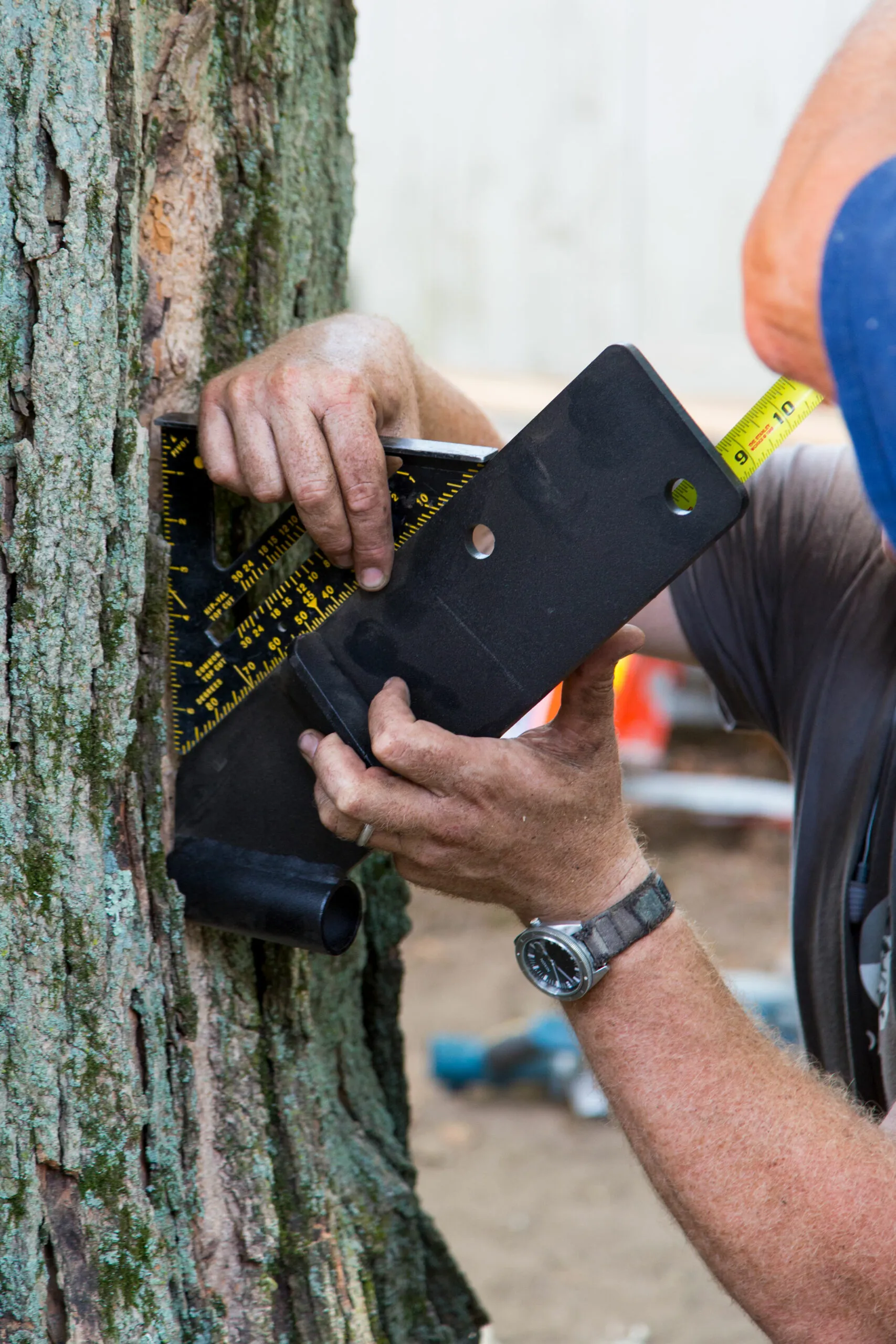
A specialty bracket and 4×6 bracket will support the end of the beam assembly. Here’s how to achieve this:
- Use a rafter square to hold the bracket at a 45-degree angle to the tree.
- Pull the tape measure from the metal tab to the underside of the header to get a rough length.
- Repeat this step on the other side of the tree.
Step 2: Form the Bird’s Mouth
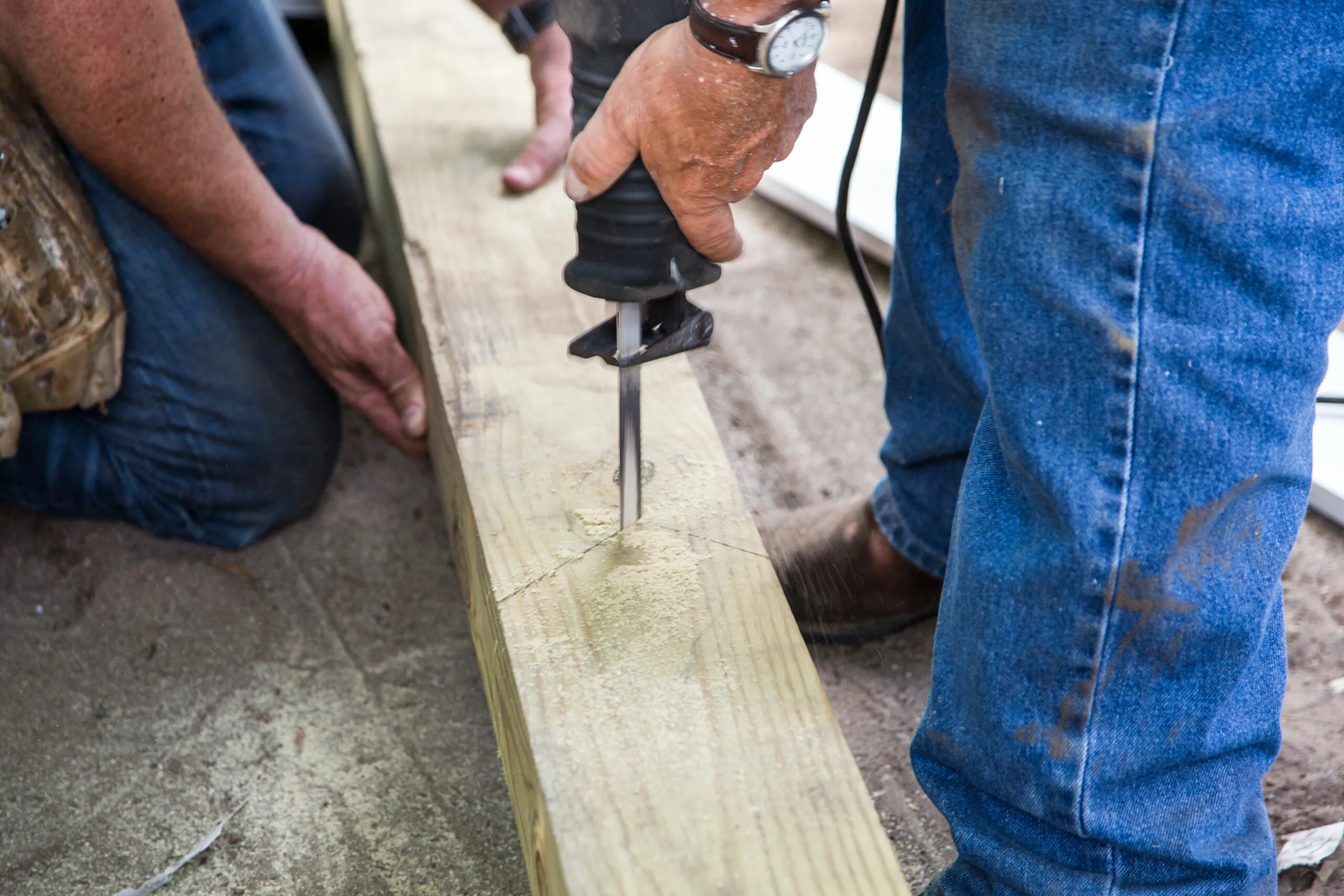
- Make a mark on the board face 2 1⁄4 inches up from the bottom edge of the 4×6.
- Rest the shoulder of the rafter square against the bottom edge with the 45-degree angle facing the board end.
- Draw a 45-degree line from the mark to the bottom edge.
- Flip the square over with its shoulder against the opposite edge and the angle facing the end.
- From the mark, make a second line along the angle to the top edge, creating an angled L—called a bird’s mouth—on the face of the timber.
- Start the cut along the lines with a circular saw before finishing with a reciprocating saw as shown.
- Measure from the corner of the L and cut the timber to length.
Step 3: Cut a Bracket Slot
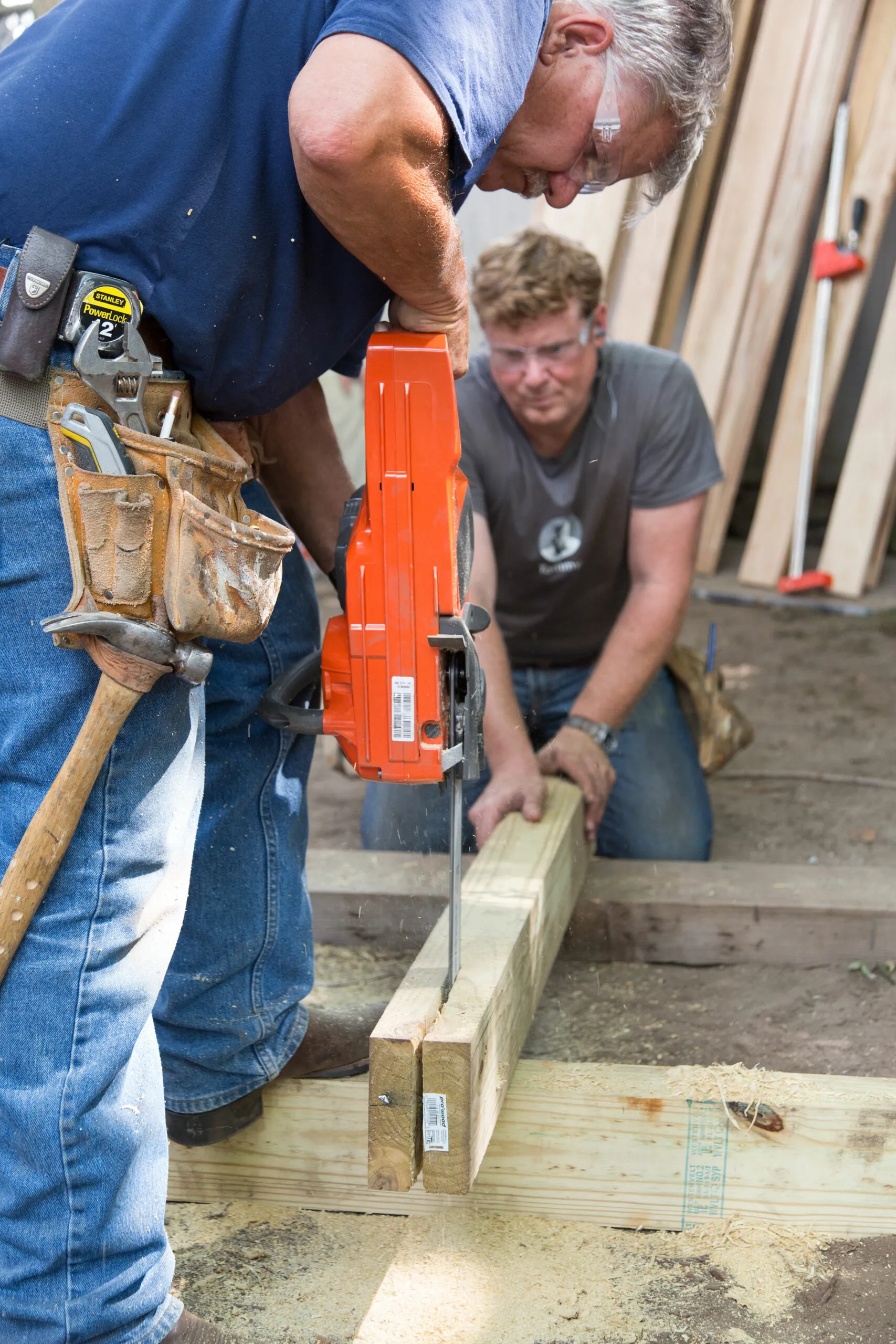
The knee brace bracket rests in a slot that you’ll cut into the end of the 4×6. Follow these steps to make the joint:
- Use the rafter square to mark the center of the end of the 4×6.
- Use a circular saw or chainsaw to cut a 3/8-inch-wide channel in the timber as long as the tab on the bracket.
- Make a second knee brace following these same steps.
Step 4: Add the Lags
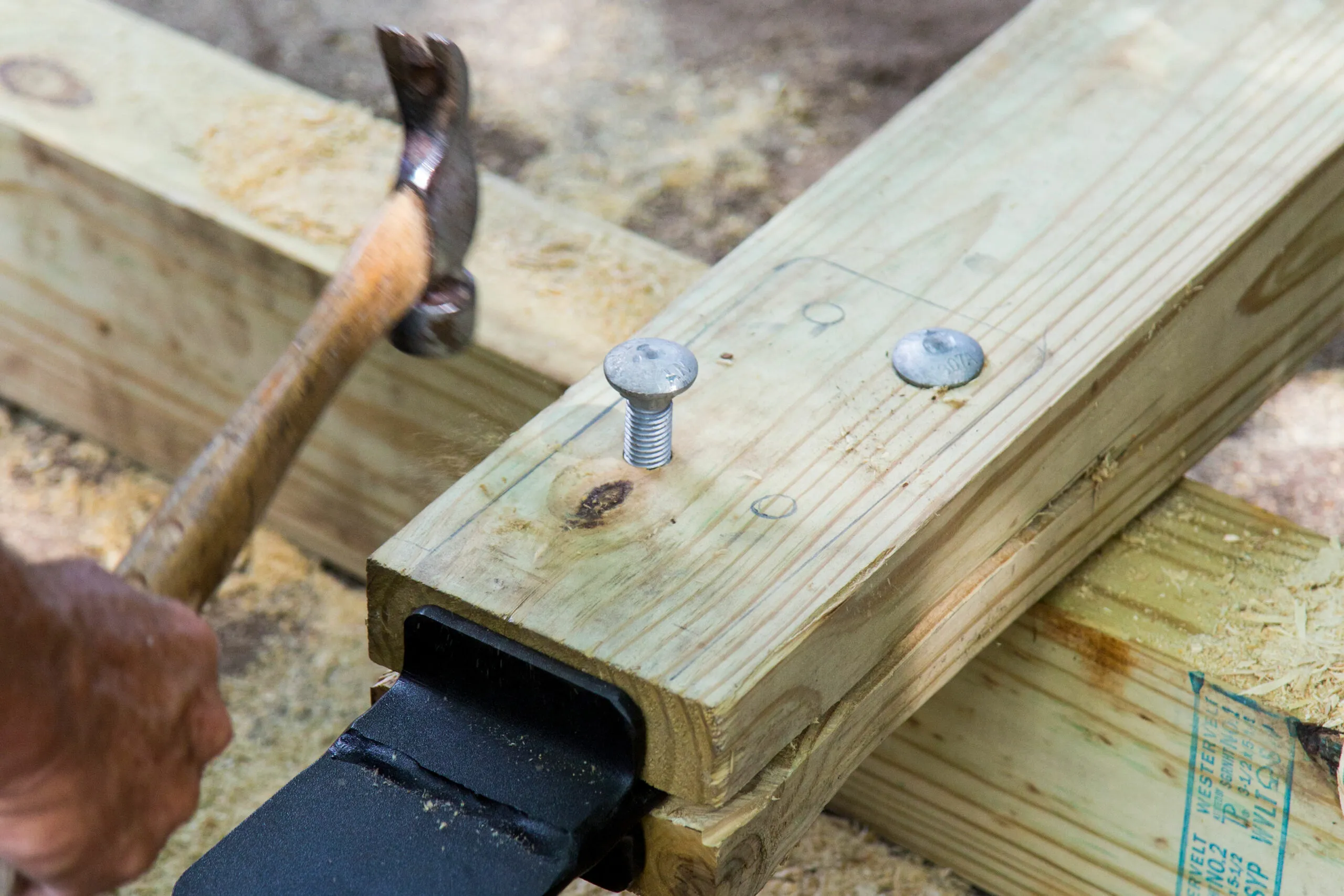
- Hold the knee brace bracket against the face of the 4×6 at the slotted end and mark the two bolt holes.
- Use a 5/8-inch bit to drill through the timber.
- Slip the bracket into the slot and hammer the lag bolts through as shown.
- Add washers and nuts and tighten the nuts with an adjustable wrench.
- Repeat for the second brace.
Step 5: Connect Brace to Header
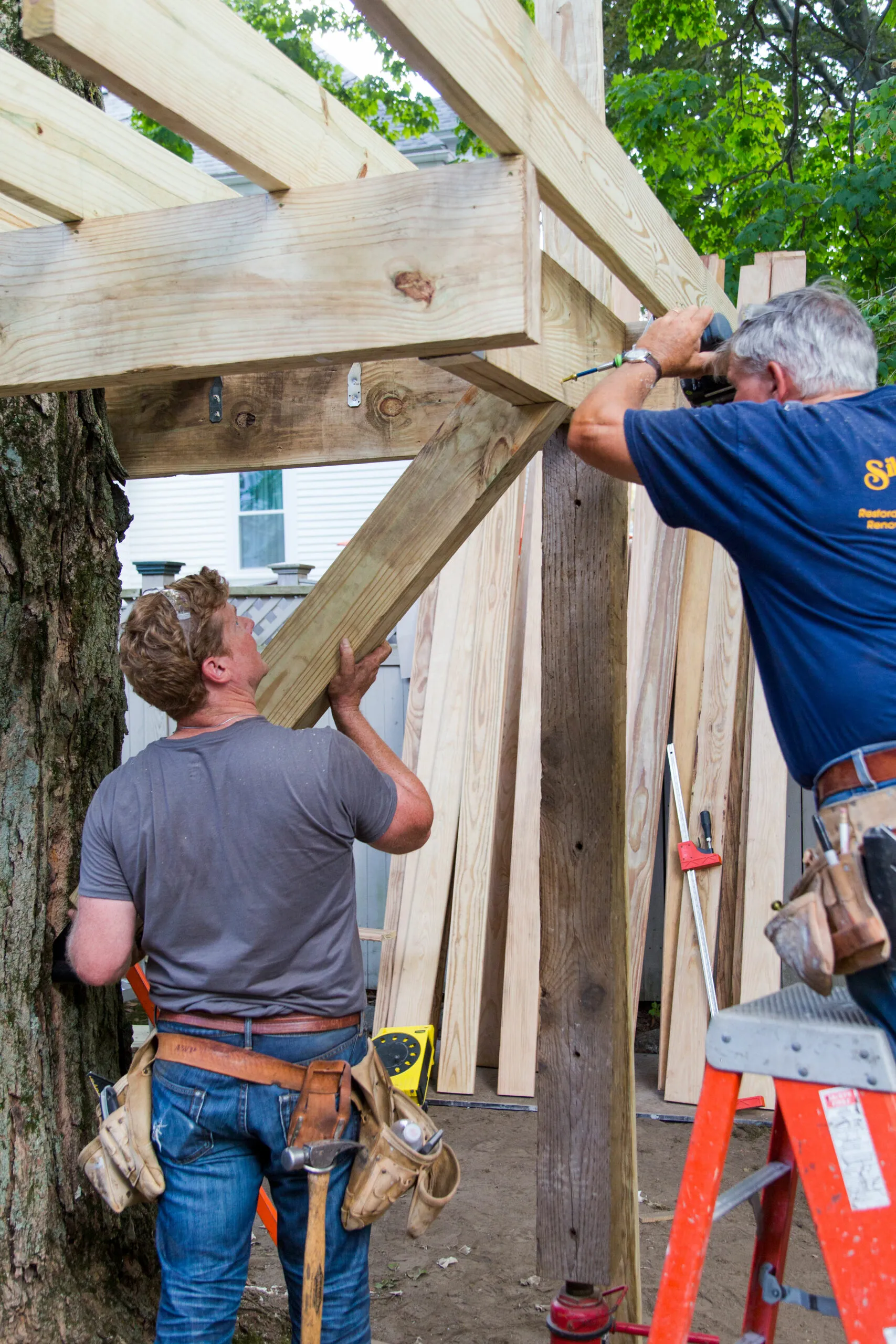
- Toenail 2×8 joists 16 inches on center to the carrying beams with ring shank nails to create an 8-by-10-foot framework.
- Use hurricane ties to reinforce the joist-beam connections.
- Lift the header about an inch with a 4×6 and a bottle jack—you’ll remove it to put tension on the brace once you’ve installed it.
- Hold the brace in place with the bird’s mouth biting the header.
- Drive a pair of 6-inch structural screws through the outside of the header and into the 4×6 as shown.
Step 6: Bolt Hardware to the Tree
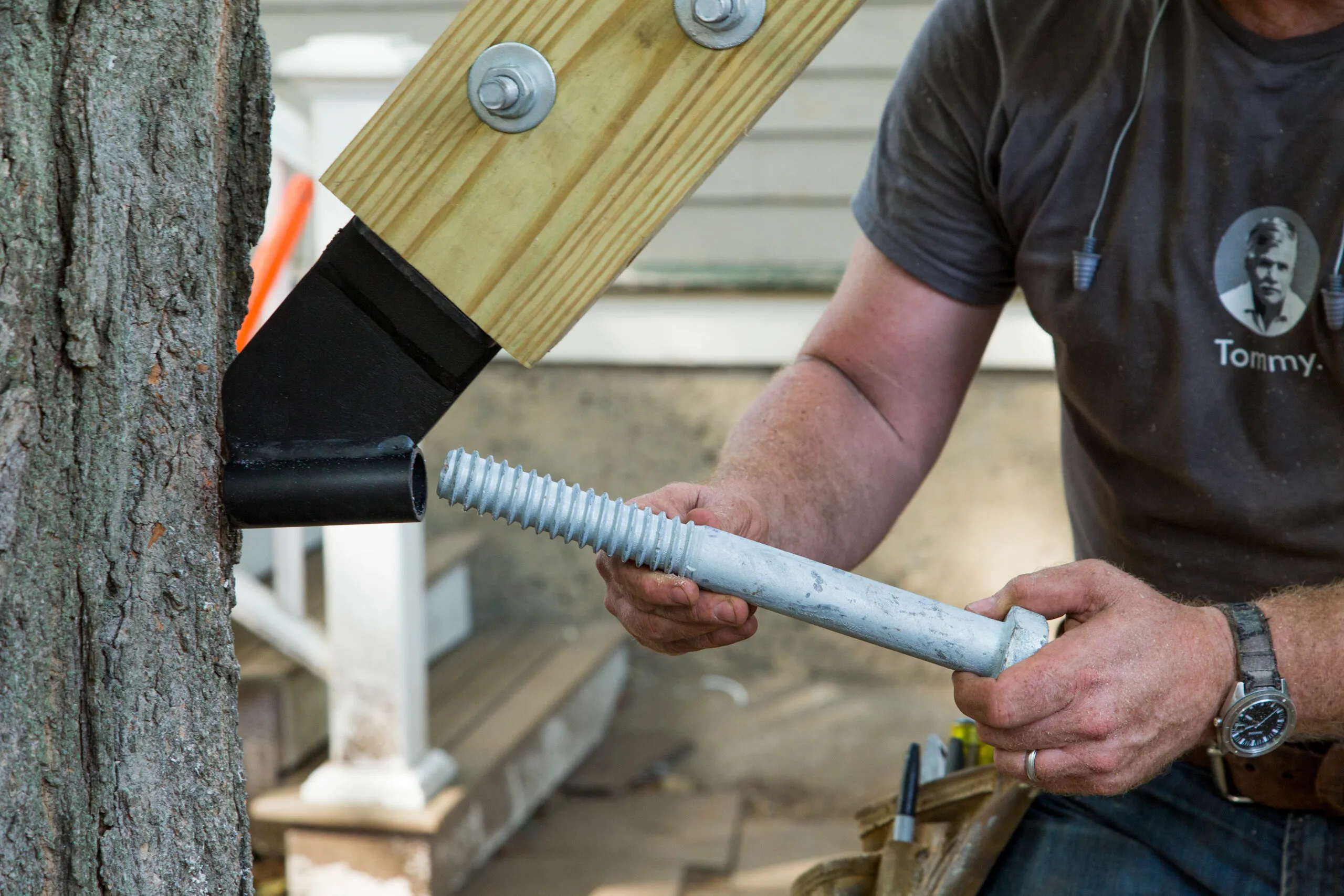
- Hold the end of the knee brace bracket to the tree.
- Using the metal tube as a guide, drill an 8-inch-deep hole into the tree with a 1 1/4-inch auger bit.
- Thread a 15-inch galvanized lag bolt into place and tighten it with a socket wrench.
- Leave a few inches between the bracket and the bolt head to accommodate tree growth.
- Lower the jack and repeat the process on the other side of the tree.
Installing the Decking
Decking creates the floor of your tree fort. Follow these steps for a professional finish:
Step 1: Attach the Decking
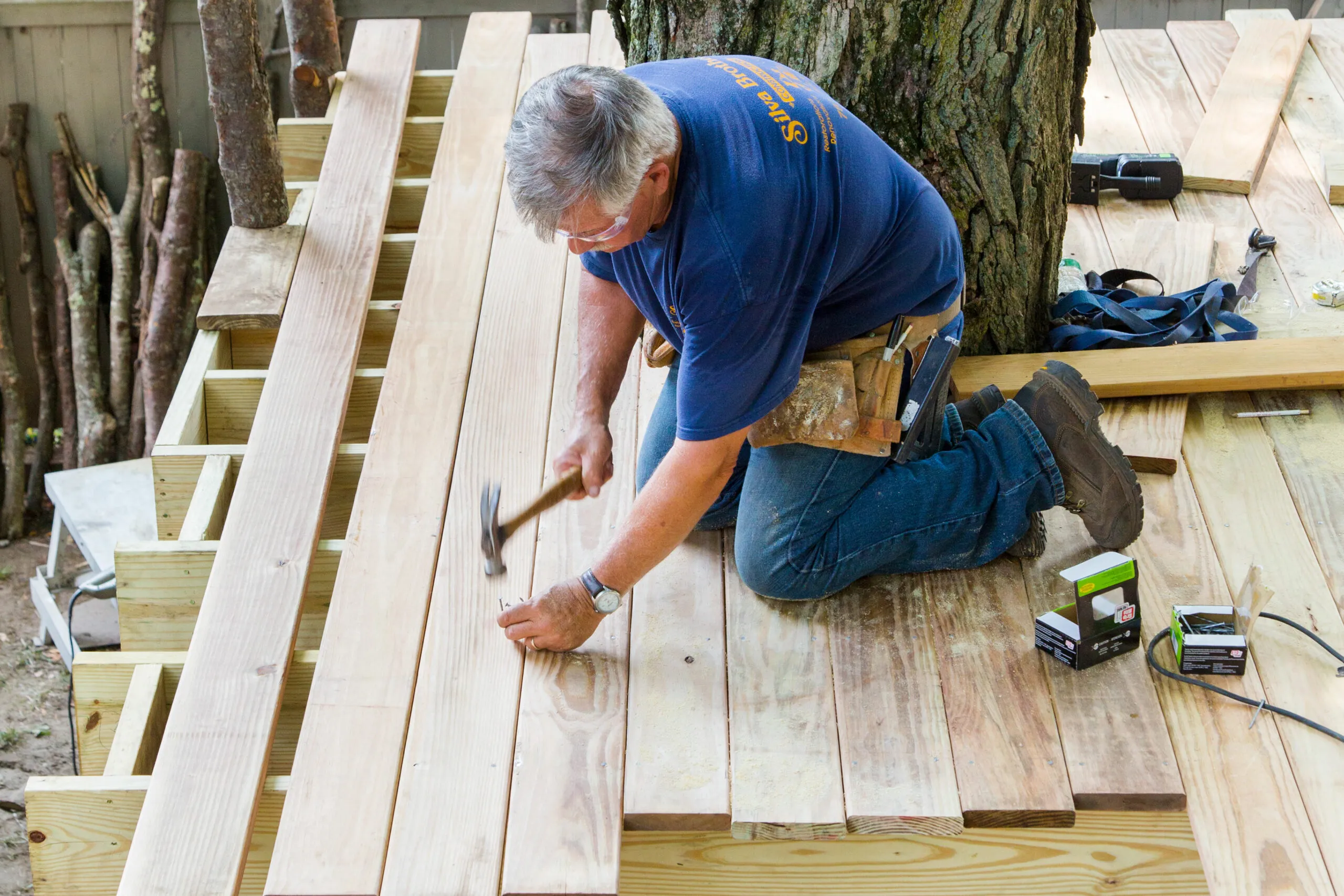
- Place a piece of full-length decking 3 inches from the tree to allow for growth.
- Hammer ring shank nails through it into each joist.
- Work out toward the edge of the framework, using the same nails as the spacers between boards. Stop about a foot from the joist ends.
Step 2: Scribe the Short Pieces
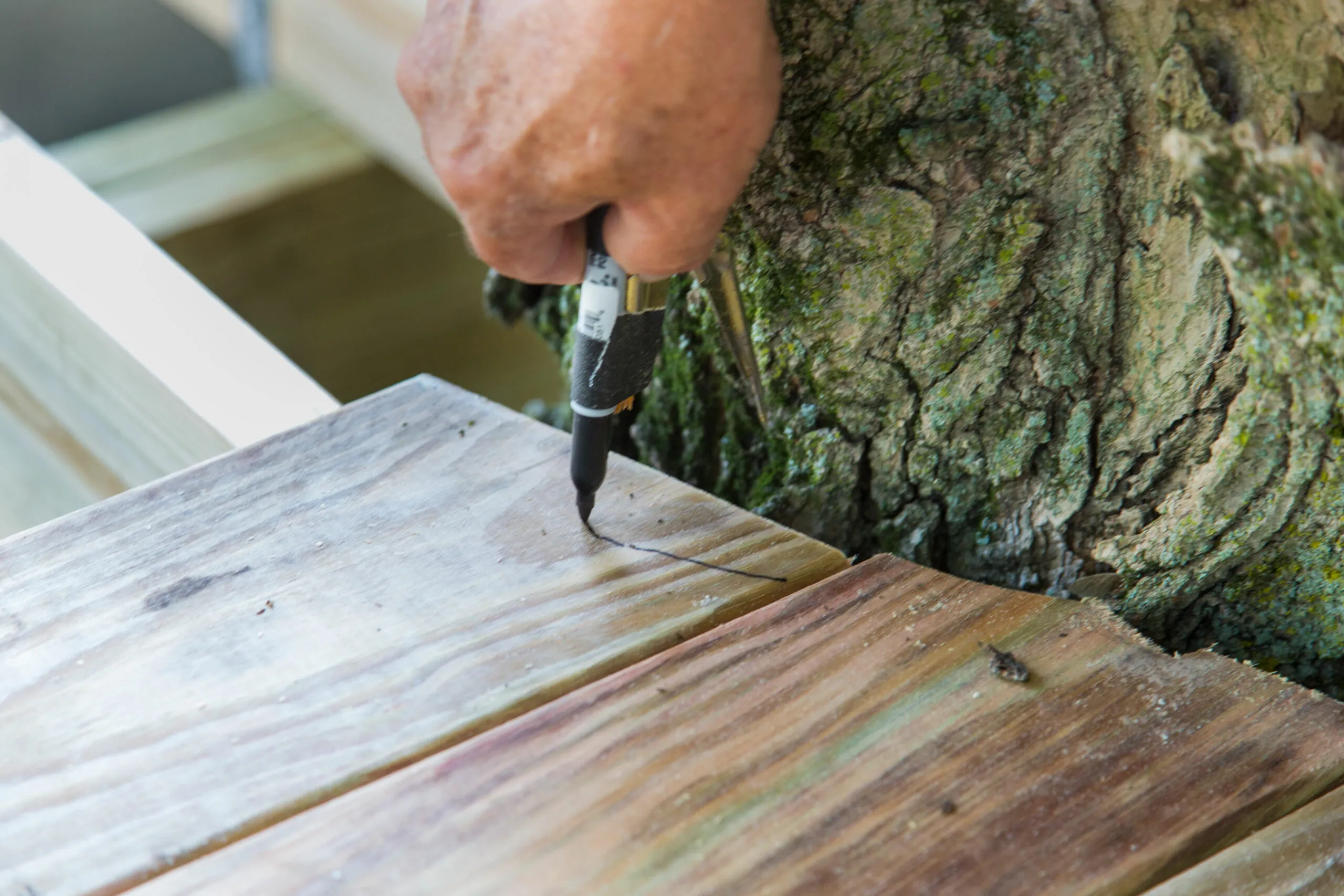
Now you’re going to work in the other direction, installing the boards interrupted by the tree. Follow these steps:
- Scribe the ends to follow the bark’s contour as shown.
- Cut the marks with a jigsaw and attach the boards, again leaving 3 inches for growth.
- Install all the interrupted pieces.
- Continue laying full-length boards, leaving consistent gaps between them for drainage. Stop when you’re a foot shy of the joist ends.
- With the decking in place, trim the ends of the boards with the jigsaw to create a natural, rustic look.
Tip: To accurately scribe the boards that run into the tree trunk, hold the compass so its legs are parallel with the joint in the boards.
Building the Railing
A sturdy railing is a safety essential for any tree fort. In the video, O’Connor demonstrates using natural branches for a unique, rustic look, which you can recreate by following the steps below:
Step 1: Install Blocking
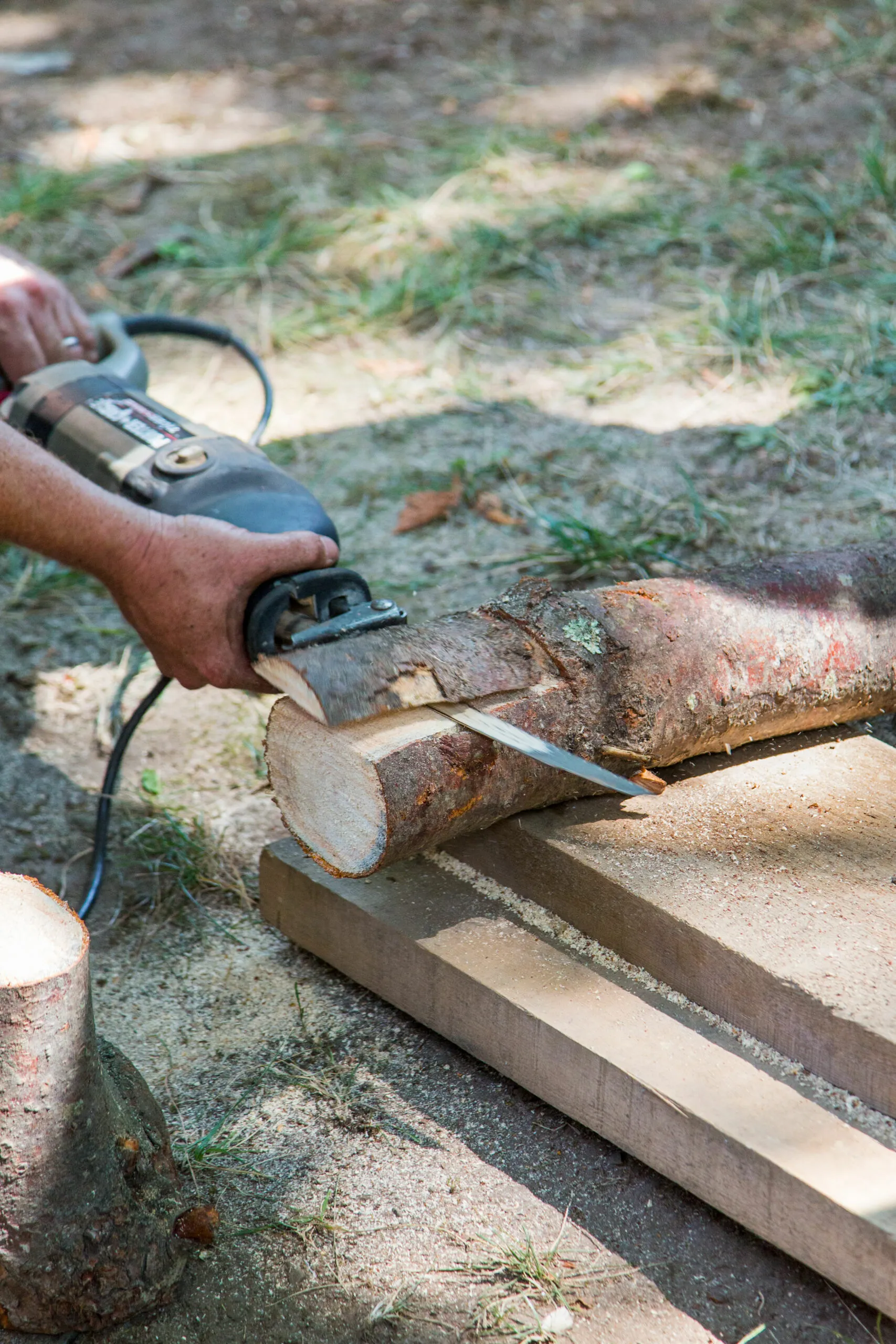
- For the corner posts, nail 2×8 blocking about 8 inches in from the joist ends of the first and last joist bays on the long sides.
- Add blocking for two field posts evenly spaced between the corners.
- Make the rail posts from straight branches that are 4–6 inches in diameter.
- Make corner posts by cutting a 7 1/4-inch-long notch into one side of a branch with a reciprocating saw as shown.
Step 2: Attach Posts
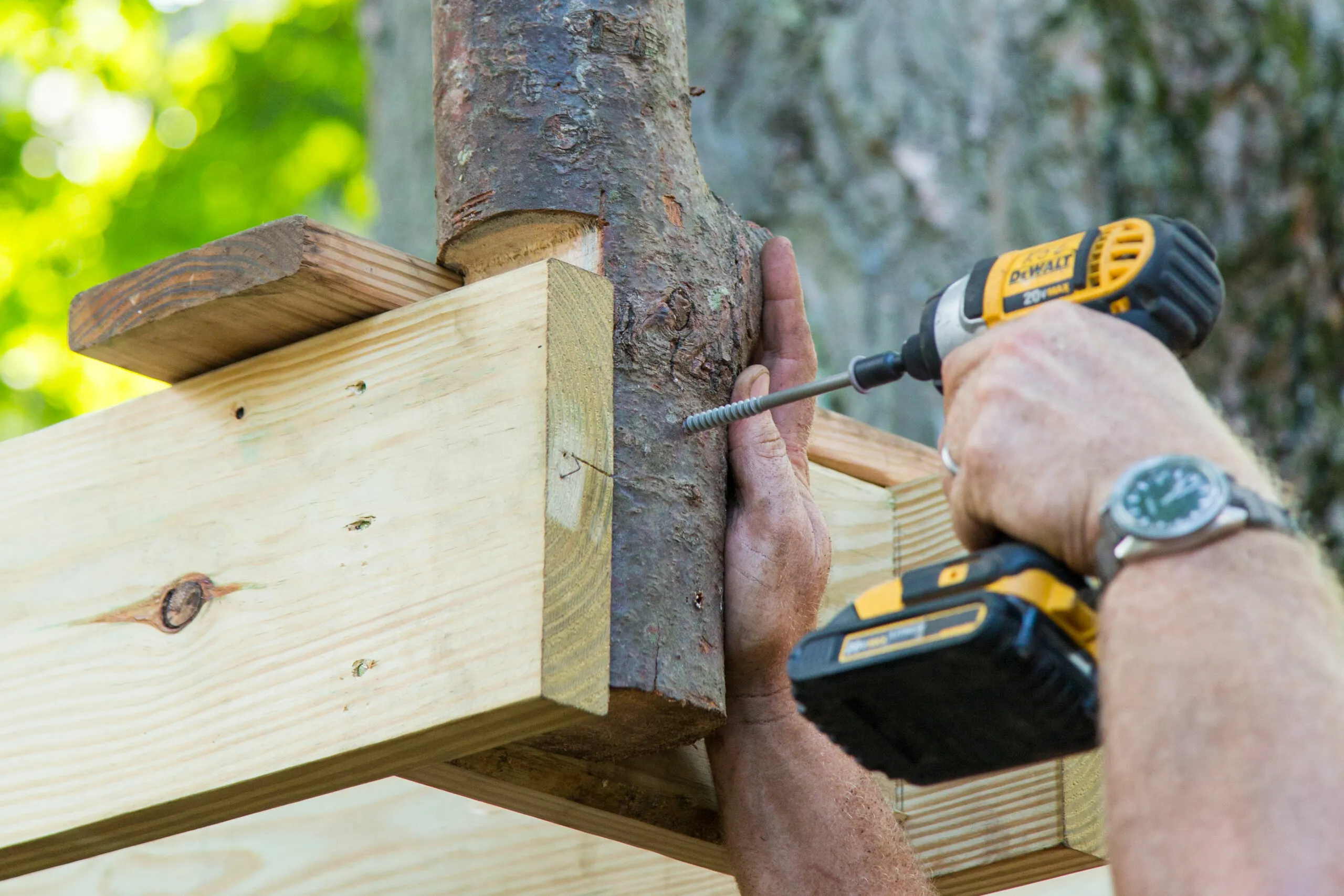
- Position a corner post with the notch against the joist and shoulder on the decking.
- Drive a pair of 10-inch structural screws through the post and into the blocking as shown.
- Repeat with the remaining corners and field posts for the long sides.
- Notch the last deck boards to fit around the posts and install them.
Step 3: Finish the Ends
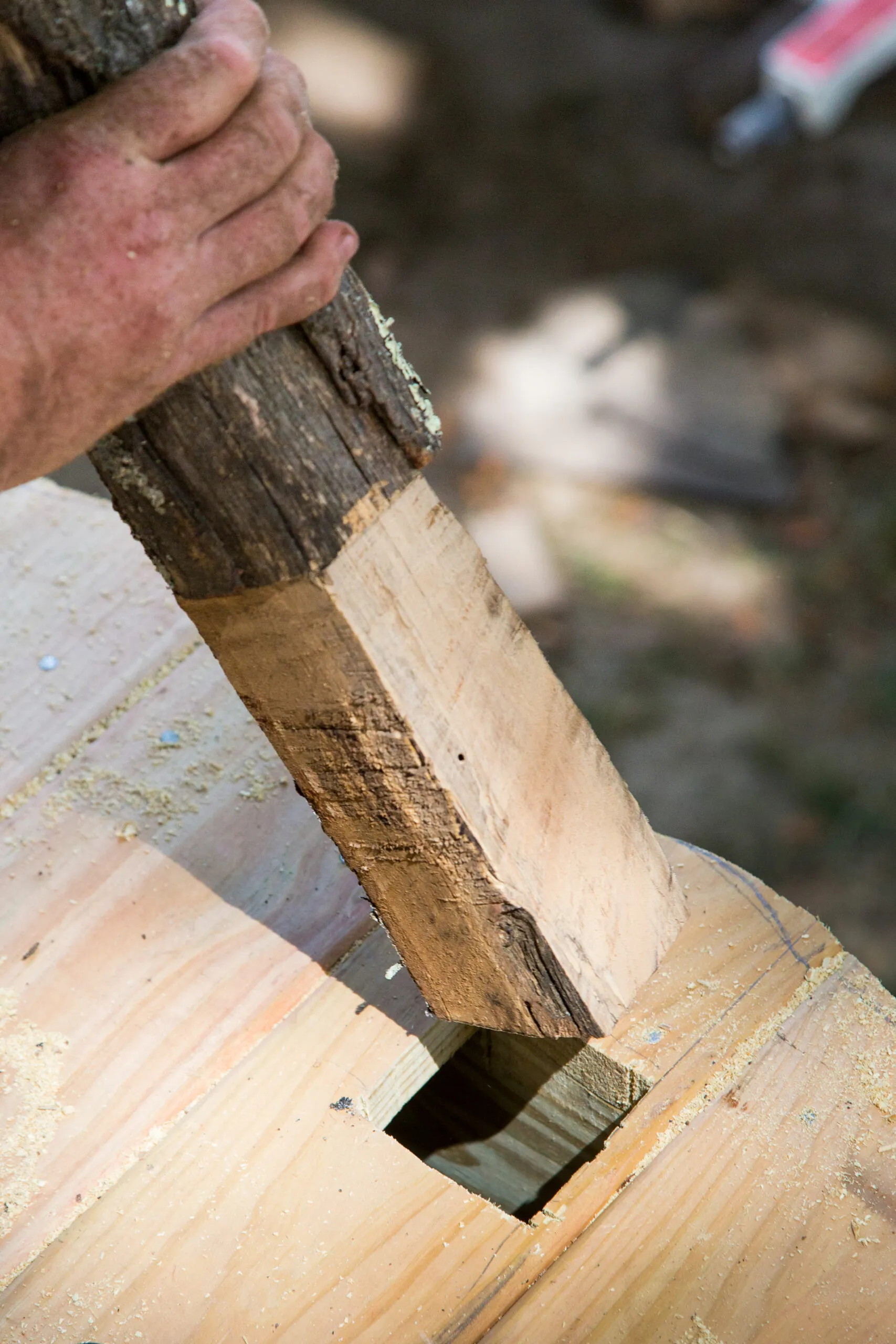
- On the short sides, plan for one field post between the corner posts.
- Notch all four sides of the field posts with a reciprocating saw.
- Hold a post in place on top of the decking, mark around the notch, then cut a mortise with a jigsaw.
- Drop the field post in the hole as shown.
- Use 10-inch screws to attach the post to the side of the joist.
Step 4: Add the Rails
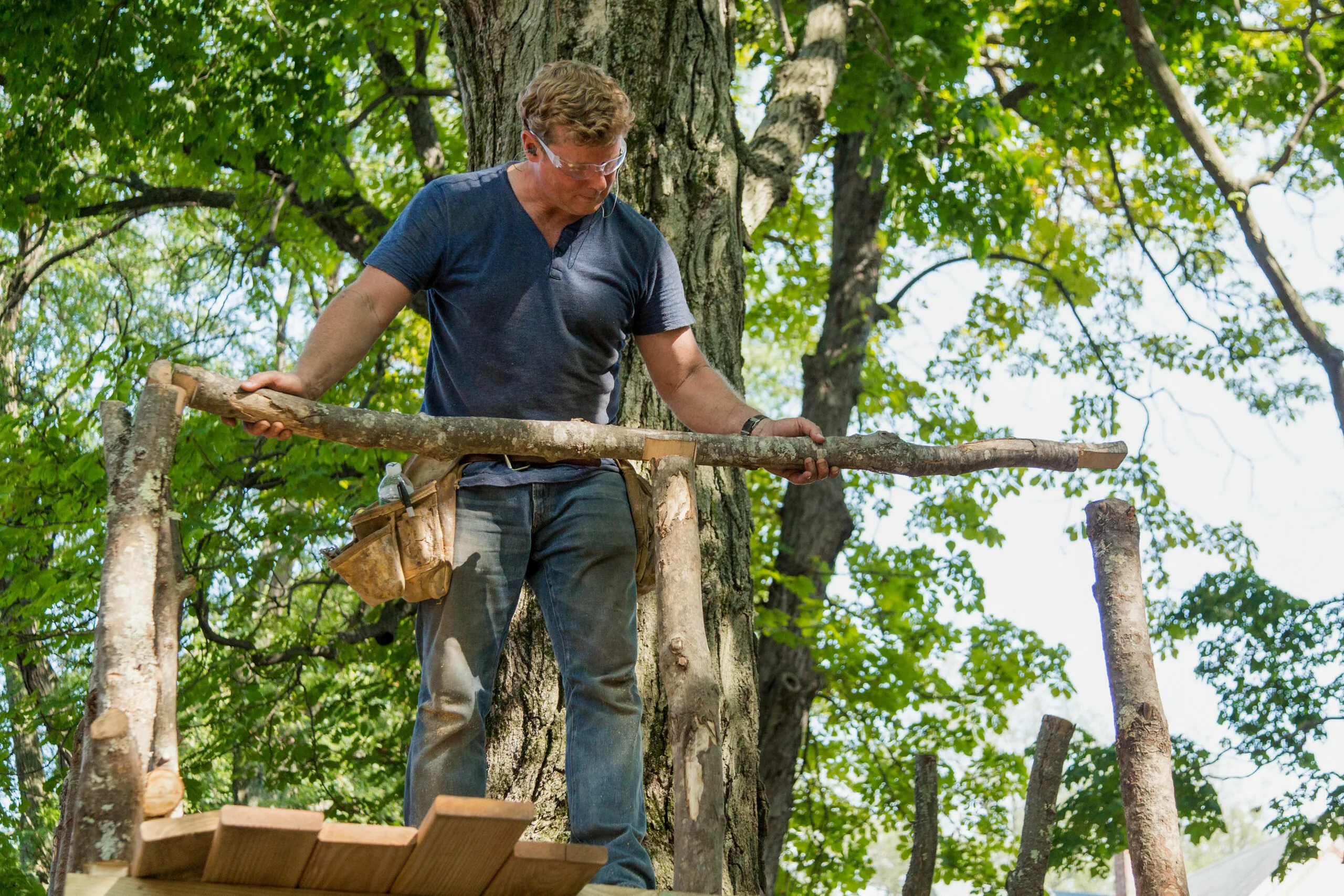
- Use a reciprocating saw to cut the field posts about 3 feet tall and notch their tops for a half-lap joint.
- Find one long top rail that spans corner to corner and notch its ends to complete a half-lap joint with the posts.
- Notch the rail’s underside where it meets the field posts with shallow saw cuts and a chisel.
- Drive deck screws through the top rail and into the posts.
- Attach the bottom rail in sections between the corner and field posts.
Step 5: Finish the Railing
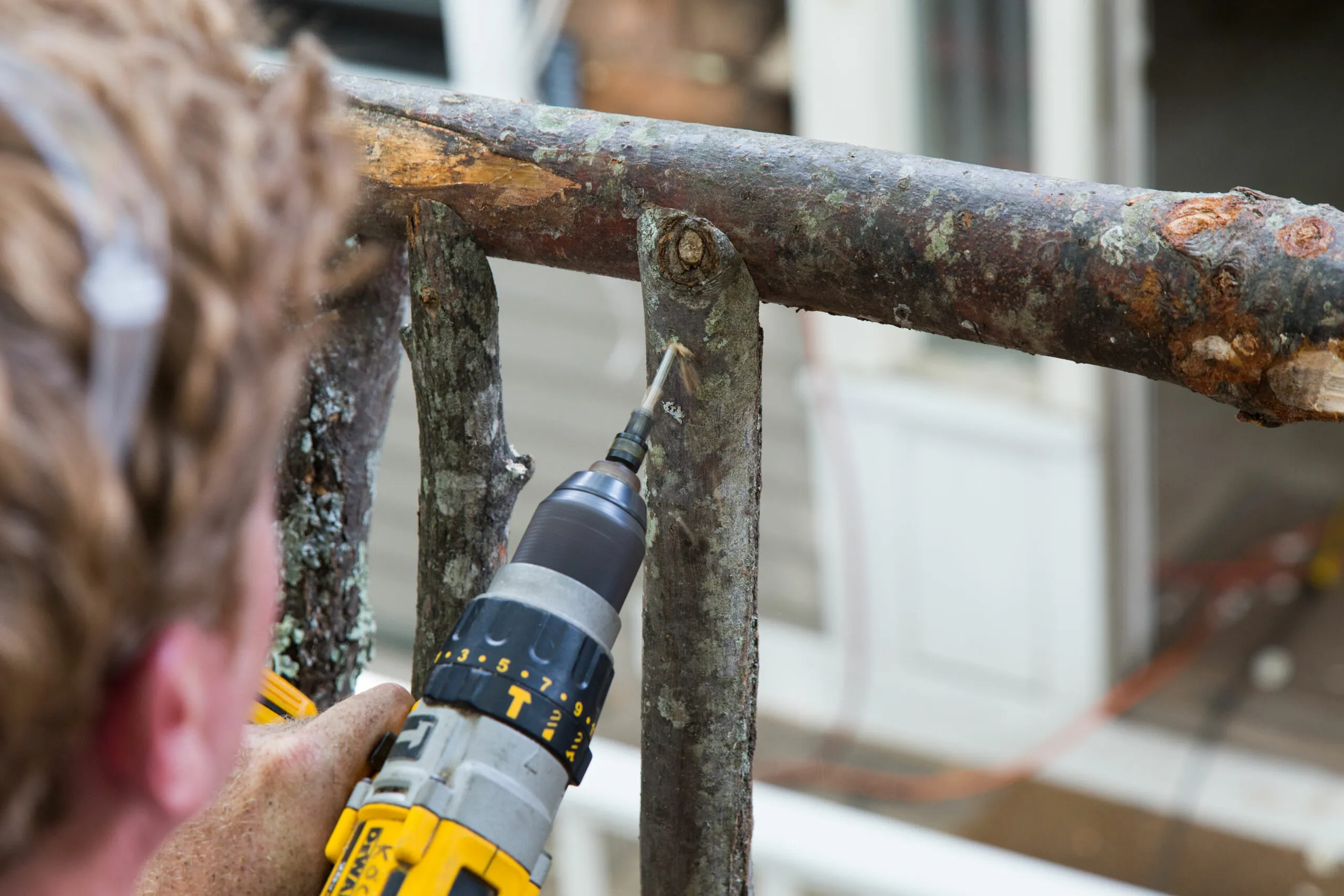
- Miter the ends of 2-inch-diameter branches to make balusters.
- Drill pilot holes through the mitered ends and into the top rail and attach with deck screws as shown.
- Screw the other end of the balusters into the bottom rail.
- For safety reasons, space the balusters about 3 1/2 inches apart.
- Attach the cargo netting to the fort with eye hooks and secure the other end using stakes.
Tip: Use a scrap piece of 2×4 to help space the balusters consistently.
Creating Access
Every tree fort needs a way to get in and out. Consider these options:
- Rope ladder: This is a classic, flexible option that’s easy to install and remove.
- Stairs: Stairs offer the most secure access but require more materials and construction time.
- Wooden ladder: A ladder provides a more stable climb but requires careful attachment to the fort.
In the video, the team installs both a wooden ladder and a rope ladder, providing multiple entry points for added fun.
Adding Final Touches
Personalize your tree fort with these fun additions:
- Cargo netting for climbing or as a safety feature
- Decorative skirting around the platform edge
- Hammock chair for relaxation
- Telescope for stargazing or birdwatching
- Water misting system for hot days
Our Conclusion
Building a tree fort is a project that combines craftsmanship with outdoor adventure. By following proper construction techniques and prioritizing safety, you can create a sturdy, long-lasting structure that will provide years of enjoyment for the whole family. Remember to consult local building codes and obtain necessary permits before starting your project.
